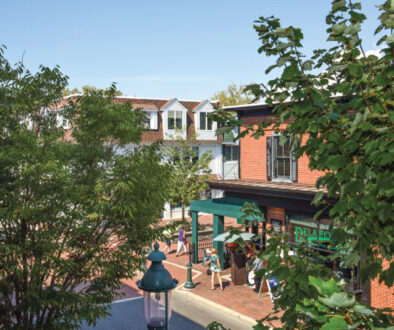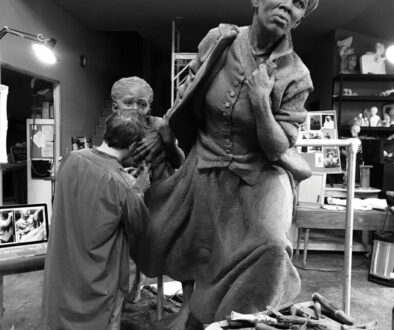The Horseshoe Crab: Linchpin of the Delaware Bay
Fed by the cool streams that meander through the Appalachian Mountains, the Delaware River snakes south along the western boundary of the Garden State to make the state a peninsula until it finds its terminus at an expansive bay that borders Delaware, Pennsylvania, and New Jersey. Here the fresh water of the river, having traveled more than 400 miles, meets the sea head-on in an inevitable rendezvous with the Atlantic Ocean. At this location the sea inserts its thumb, as the warm saltwater fed by the Gulf Stream leaves behind its print in the tepid, brackish water that forms the lower Delaware Bay.

One of the most heavily trafficked waterways in the United States, the river and its sources provide drinking water for 15 million people from four states and is home to a teeming biodiversity that includes marine mammals, migratory birds, turtles, and more than 60 species of fish. One unique species of animal has established itself in this region more than anywhere else in the world and has roamed the ocean floor for some 450 million years. While other distinct types are found around the globe, the species of horseshoe crab located on the east coast of the United States is found in its greatest number off the coast of Cumberland and Cape May counties.
It is the thread of the horseshoe crab’s existence that helps to hold nature’s intertwined net of biodiversity together in the Delaware Bay region. Yet it is this often-overlooked animal—which has survived on earth longer than almost any other—that also provides the key to the survival of the entire human population as the planet struggles with the current COVID-19 crisis.
As part of the arachnid family, the horseshoe crab is more closely related to spiders and scorpions than it is to commonly known varieties of crabs and other crustaceans. Lacking the venom of its land-dwelling relatives, the horseshoe crab finds protection in a thick external shell that only the mouths of sharks and sea turtles can penetrate. But that is not the secret to its incredible longevity and ability to outlast every mass extinction event from the ice ages to dinosaur-killing comet impacts in the last half billion years.
While there are four species of horseshoe crabs in the world, three are located in the South Pacific, and only one in North America, where it makes its annual appearance along the beaches on the western side of the Cape May peninsula during the mating season of late spring. Often referred to as “living fossils,” the horseshoe crab’s design is nearly perfect in its simplicity, with almost every vital organ protected beneath an armor that flexes in just two spots, which still leaves the animal agile enough to swim, or right itself should it be toppled upside down by rough surf. Its vulnerability to predators is—as with many animals—when it is young. Laid in large, shallowly buried clutches, millions of horseshoe crab eggs are eaten every spring by migrating birds and serve as an important source of nutrition for their lengthy treks.
Eco-tourism has been on the rise in New Jersey, especially in the summer months along the southern shore. Whale watching and dolphin excursions have been long standing staples of the tourist trade in Cape May County, but the growing popularity of habitat exploration with locations such as the Wetlands Institute in Stone Harbor or the Nature Center of Cape May has helped expand the growing eco-tourism trade.

Perhaps most notable of these activities is the season of birding, where each year thousands of tourists from the United States and other countries flock to Cape May County in the hopes of catching a glimpse of bald eagles, ospreys, and even the endangered black skimmer. But for bird watching enthusiasts, the most notable of these annual avian visitors is the Red Knot, which makes a three-month, 19,000-mile round-trip from Tierra del Fuego to its breeding grounds in the Arctic before its eventual return to South America. During the trip it makes just two stops—once in Brazil, and once along the shores of the Delaware Bay, where its visit is timed perfectly with the egg-laying season of the horseshoe crab in the month of May. During their time in Cape May County the birds fatten up, providing the opportunity for wallets of local tourism and hospitality businesses to do likewise.
Under the full moon in May, the horseshoe crabs crawl ashore up gently sloping stretches of sand in shallow bays to mate, laying eggs by the thousands before returning to the sea for an entire year until the next mating season. Under the feeding barrage of nearly one million migrating birds, the horseshoe crab helps to ensure the survival of its own species by laying eggs in gigantic numbers, a strategy that has worked for millennia. During the four-week mating season, females will lay numerous clutches of eggs totaling as many as 80,000, yet fewer than 20 horseshoe crabs from each group will eventually survive to reach their sexual maturity at age nine.
Horseshoe crabs may live up to 25 years and will molt some 17 times as they reach maturity, discarding smaller shells as they grow. Even if the eggs manage to survive the onslaught of migratory birds feasting upon them, the newly hatched crabs must emerge from their shallow nests to make their way to the sea, where many will fall victim to aquatic predators. Unfortunately for the horseshoe crabs, their value lies far beyond providing an abundant food source for the natural predators they must face both in the water and on land.
For years, the commercial fishing industry harvested the crabs not as a food source but as bait to catch more marketable commodities such as conch and eel. Worse still, female horseshoe crabs were found to be the best bait, and as harvesting them was free and unregulated, the population decreased by 75 percent during the 1990s, with as many as two million crabs harvested in one year alone. This decline—especially in the breeding population—devastated not only the crab population, but the migratory bird population as well. Some estimates even point to a 90 percent decline in horseshoe crab eggs in the last two decades, which not only spells trouble for the horseshoe crab, but also for those animals who depend on their eggs as a food source. With fewer clutches of horseshoe crab eggs available to nutrition-starved birds like the Red Knot, the birds’ numbers plummeted in recent decades. Unable to restore their much-needed fat reserves, the Red Knots could not reach their Arctic breeding grounds, and the species continues to suffer to this day. As a result, the Red Knot has now become a threatened species.
Solutions to this ecological issue have been explored, including the introduction of artificial baits to replace the horseshoe crab. However, even without their use by the commercial fishing industry as bait, the crabs still face a multitude of other challenges.
Climate change has led to rising ocean levels that have further depleted breeding areas. With sea levels projected to rise as many as six feet in the next 100 years, the valuable wetlands in states like New Jersey and Delaware would seem to be particularly at risk.
Because of its location near large population centers, business around the greater Delaware basin accounts for 25 billion dollars annually for the region. However, the price for this prosperity has come at the cost of a decline in water quality and noticeable ecological damage. As the population in the Mid-Atlantic states has increased, so has the demand for real estate. Consequently, development of beachfront property and disappearing wetlands has reduced horseshoe crab breeding grounds, making each successive year’s attempts to spawn increasingly difficult. Similarly, placement of sea walls or stone breakers often traps the horseshoe crabs, causing the death of numerous breeding-age animals each year.
But it may well be that 450 million years of perfect evolutionary development will prove to be the horseshoe crab’s ultimate salvation—or be the very thing that leads to its downfall.
Scientists have discovered an abundance of uses for the horseshoe crab in addition to the contact lenses and medical sutures already produced via this creature. Unlike the blood of humans, which is based in iron and oxidizes to the familiar red color, the blood of the horseshoe crab is copper-based, and it is this bluish-green liquid that makes the species the most important animal on the face of the earth.

The blood of the horseshoe crab possesses a simple but unique immune system that functions to keep it safe from disease and infection. Cells called amebocytes are present in the horseshoe crab’s blood and are exceptionally sensitive to the presence of endotoxins from bacteria that may enter the animal’s bloodstream. When it comes into contact with any endotoxins, the blood immediately clots, forming a barrier around the invading presence, and a natural antibiotic is released that kills the microbes and keeps the horseshoe crab healthy. It is precisely this trait that drew the attention of the medical field and makes them of critical interest to companies doing pharmaceutical research.
Every summer, horseshoe crabs are captured and brought to laboratories to harvest their blood. Under controlled conditions they are kept cool and moist, and the animals will have nearly one-third of their blood removed for use in medical research. Because they are marked by researchers when collected, the same animals will often be seen again and again at their annual harvest time. Sadly, even though the animals are returned to the wild afterwards, many of the crabs—weakened from the ordeal—will die as a result of the procedure. Some estimates place the mortality rate for these annual collections at up to 30 percent.
One such test for which the horseshoe crab’s blood has become invaluable is the Limulus Amebocyte Lysate (frequently called LAL) test, which is used to detect any bacterial endotoxins that may be present in the manufacture of injectable drugs. The implementation of this testing in the early 1970s far exceeded the older Gram Stain method, which—while it could provide markers for the existence of bacteria—could not detect potentially hazardous endotoxins.
“The importance of the assay can’t be overstated,” says Dr. Lori Herz, Professor of Practice in the Bioengineering Department of Lehigh University. Herz, who previously worked as an engineer at Bristol Myers Squibb where her division developed and manufactured injectable products, knows exactly how essential the test derived from the horseshoe crab has been in the pharmaceutical field. “There are easily hundreds, perhaps thousands, of injectable products on the market in the United States. There are also many injectable products in development, including biologics and cell therapeutics.”
In New Jersey, where the life science pharmaceutical industry comprises the largest percentage of the state’s gross domestic product, the importance of the horseshoe crab becomes critical to the companies whose fiscal health depend upon it. Because every vaccine and injectable drug now administered in the United States is first screened through tests derived from the blood of these animals, it is fair to say that every individual you know owes some debt for their personal health to the horseshoe crab. That fact alone would seem to make their preservation, as well as the welfare and continued existence of this animal, of paramount concern for everyone in America.
This testing has never been more critical than with the emergence of the current Coronavirus pandemic, which brought about the urgent need and desire to find safe and effective vaccines for distribution to millions of people. While praise has been given for Operation Warp Speed in the United States, this progress would not have been possible without the horseshoe crab. In fact, according to a recent 2020 report from the World Economic Forum, there are some 400 Coronavirus drugs now being produced or currently in development, and all of these will be tested using the blood of horseshoe crabs. Given that experts now predict that Covid-19 will not be the last pandemic the world will face, the dependence of the human population on the horseshoe crab becomes even more critical.
Despite this, legislation to protect the horseshoe crab has been less than comprehensive, especially around the animal’s Delaware Bay population. Recently, the State of New Jersey took steps to place a moratorium on harvesting horseshoe crabs and their eggs for an “indeterminate” period of time, but it has stopped short of more permanent protection. Commercial fishing companies may still use horseshoe crabs as bait, provided they were not harvested in New Jersey. While this practice does help to restore the crab population of the southern shore, it logically only serves to deplete the animals from some other region of the United States, where their dwindling numbers will inevitably wreak havoc with the ecology of that area.
The State of Delaware has some regulation, but still permits the harvesting of horseshoe crabs for use as commercial fishing bait, even allowing dredging in certain circumstances. Pennsylvania, which has limited coastal exposure for horseshoe crab breeding, has passed regulations prohibiting commercial sale of the animals. However, heightened conservation efforts in the Delaware Bay region have unfortunately led to increased harvesting of horseshoe crabs in nearby geographic regions such as Virginia.
But the tide may be changing in the Delaware Bay. In March 2018 Congress approved five million dollars for conservation programs around the region so that the Delaware River Basin Restoration Program could begin the process of reversing the wanton exploitation that plagued the area for decades. This, along with the Delaware River Watershed Initiative announced in April of that year, saw regional environmental groups in New Jersey partner with others from Delaware, Pennsylvania, and New York to infuse 40 million dollars into restoring and protecting land and tributaries along the river.
Eco-friendly solutions to beach erosion and marsh depletion have been introduced successfully along New Jersey’s southern shore and have demonstrated that the coastal region of the Delaware Bay is remarkably resilient. Recently the Nature Conservancy developed and launched an oyster reef in New Jersey as a breakwater along the Gandy’s Beach region in the Delaware Bay. With wave intensity reduced, the area noted increases in sand accumulation, providing more breeding grounds for horseshoe crabs—which translates into more feeding grounds for migratory birds.
Medical researchers have even developed new endotoxin detection tests that do not require the use of horseshoe crab blood. Introduced more than 15 years ago, the tests are still not yet widespread in their use but may well provide another approach to help end the slide of decreasing horseshoe crab numbers.
It has faced the worst natural disasters the world has dished out, including extinction-level events, yet the beautifully simplistic design of the horseshoe crab has always endured. Like so many species before it, the actions of mankind have assaulted its survival on numerous fronts from destruction of habitat, breeding grounds, and decimation of its mature population. But the horseshoe crab may ultimately be a symbol for future conservation and ecology efforts. It may well be that one of the world’s most successful and most enduring animals may find its recovery and salvation through the needs of others—whether it’s the welfare of migratory birds like the Red Knot, or the future needs of a growing human population.





